ACCOUNTABILITY for Tower Climbers
Here’s the truth about the climbing industry. The carriers are protected by layers of subcontracting, and there is very little consistency in safety and training regulations across states. Climbers are often at the mercy of state legislation, carriers, subcontractors, all of whom are difficult to hold accountable.
OSHA (the Occupational Safety and Health Administration) has guidance for safety, but has little power to enforce rules.
[Read the OSHA/FCC Guidelines here. ]
Another key issue is unionization, with the Bureau of Labor statistics reporting union representation of telecom workers at around 15.4%. For comparison, local government employees enjoy 41.7% representation.
But tower climbers represent an even smaller number within that 15.4%. Unions tend to be reticent to represent small groups of climbers, who are spread throughout hundreds of small companies, giving them very little hope for collective bargaining.
-FCC/OSHA Joint Manual on Communication Tower Best Practices

Want to help?
So what can we do now? We can effect change as a community, in ways big or small!
Below few ways you can participate in the Movement.
We're always looking for new ways to collaborate, so please feel free to reach out with suggestions/contacts of your own.
HOW CAN YOU HELP?TOWER INDUSTRY HIERARCHY
(roll over)
While the general public assumes that their cell service is entirely provided by big brand carriers, the truth is more complex. The infrastructure that these carriers rely on and monetize, is in fact built by a long line of subcontractors.
This lessens the risk for carriers, and also builds a buffer of accountability, letting climbers and sub-contractors bear the financial and physical risk of building these networks.
-
THE CARRIERS(AT&T, Verizon, Sprint, T-Mobile) All entities that provide some form of telecommunication services (fixed and/or mobile; voice and/or data) as their primary business to all or a subset of consumers, enterprises, governments and other telecom service providers.
-
SITE ACQUISITION COMPANYThese are responsible for coordinating telecommunications site acquisition and leasing activities on behalf of their organization. They are in charge of completing site candidate identification packages, as well as lease and zoning audits.
-
TURF VENDORSTypically large construction management firms such as General Dynamics, Bechtel and Nsoro – Oversee batches of tower projects, subcontracting out the climbing work to smaller companies.
-
TOWER COMPANIES(ATC, Crown, SBA, etc...) Companies operating as a real estate investment trust and an owner and operator of wireless and broadcast communications infrastructure solutions.
-
TURNKEY CONTRACTORBuilds foundations, roads, tearing down trees, does electrical, fiber. Trenching. Put in conduit.
-
STACK & STEEL CO.Banded on 18 wheeler, they built the actual tower. Stack the steel like an erector set and put it together.
-
TOWER CLIMBER CO.Build mounts, radios, antennas, hired by general contracting companies in some cases, and in some cases are directly working with the carrier.
TAKE ACTION!
HOW CAN YOU HELP ?
Tell A Friend!
Tell a friend. Now that you’re aware that tower climbers are providing you with modern conveniences that you depend on, share that with others. Explain that they do this thankless job for little pay and there are no standardized regulations in place to keep them safe.
BUY SOME MERCH!
We can assure you that while you’re sporting a HIGH tee/hoodie, someone will ask you what HIGH means, granting you an opportunity to talk about these brave men and women. All proceeds benefit the movement, and organizations supporting climbers and their families.
CONTACT YOUR REPS
CONTACT OSHA
OSHA’s Mission
With the Occupational Safety and Health Act of 1970, Congress created the Occupational Safety and Health Administration (OSHA) to ensure safe and healthful working conditions for workers by setting and enforcing standards and by providing training, outreach, education and assistance.
However, regulations are often mere SUGGESTIONS, and are often difficult to enforce.
SEARCH FOR OSHA OFFICE BY STATE
SEARCH FOR STATE PLAN
Contact your State Rep.
CONTACT YOUR STATE REP.
SEARCH FOR YOUR STATE REPRESENTATIVE
GROW THE MOVEMENT!
Contact us!
Phone: +1 484-293-1233
Email: Highthemovement@gmail.com
Donate
Help sustain the Movement!
Donate
